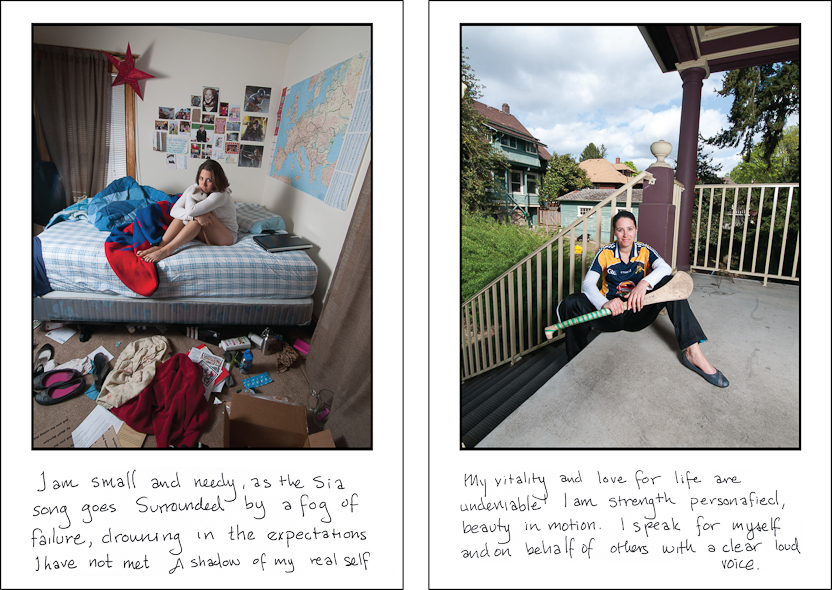 |
| Self Portrait of Liz Obert ©Liz Obert |
Although 5.7 million American adults are diagnosed with bipolar disorder and approximately 14.8 million are afflicted with depression, these disorders are often misunderstood. Bipolar or Manic Depression is characterized by radical mood changes that range from mania to extreme sadness. Most subjects are hospitalized at least once during their lives. Bipolar II is a milder affliction in which people mostly suffer from depression with less severe manic episodes. People with major depression experience extreme lows and often have thoughts of suicide. All these disorders are extremely disruptive to people’s relationships and work, yet many blend in with general society and can disguise themselves a “normal” person.
For many years, Liz Obert woke up, got dressed, went to work, and acted as if everything was fine. Once she returned home, however, she found herself lying around depressed, feeling hopeless and full of dread. Diagnosed in her early 20s with depression, Obert said she tried therapy and medication, but nothing seemed to work until around five years ago when a psychiatrist diagnosed her with bipolar II disorder and put her on mood stabilizers.
Although she’s had a few medication tweaks since then—“that’s kind of the life of someone who has bipolar”—Obert said she has for the most part been in a good place. Obert feels the dual life she led for so long isn’t unique for people who suffer from mental illnesses and who “must mask their symptoms in order to function in the outside world.”
In 2013, she decided to begin a series that dealt with the realities of what it means to put on a brave face while simultaneously coping with forms of depression. Starting with herself, Obert took two photos: one that showed the person she chooses to present to the world, and a second portrait that presented an image of how she existed behind closed doors when feeling depressed. “I hope to give a glimpse to the viewer about the internal lives of people who struggle with disorders that are often misunderstood,” she wrote in an artist statement about the series “Dualities.”
 |
| John Paul ©Liz Obert |
 |
| Jonathan ©Liz Obert |
 |
| Katherine ©Liz Obert |
 |
| Steph ©Liz Obert |
 |
| Tamera ©Liz Obert |
Salah satu fungsi dari cara bertutur secara dyptich adalah memunculkan efek ketiga dari 2 buah foto. Teknik dyptich sangat efektif dan kuat untuk cerita-cerita yang bersifat komparatif seperti project ini. Yang unik dari project ini adalah caption foto, dimana captionnya ditulis sendiri oleh si subject berkaitan dengan pengalaman hidup mereka.
Jika melihat tema yang diangkat, sebenarnya tidaklah jauh-jauh dari jangkauan fotografernya sendiri. Liz Obert pun menjadi subject karena merasa apa yang dialaminya merupakan sebuah realitas yang perlu diketahui oleh publik. Mulailah membangun sebuah cerita dari yang terdekat. Jika anda merasa dekat dengan diri anda, lingkungan anda, keluarga anda, saudara anda, maka akan selalu ada cerita menarik yang bisa disuarakan melalui bahasa visual, bahasa fotografi.
Salam persatuan,
Persatuan Indonesia






0 Response to "Diptych: The Secret Dual Lives of People Living With Mental Illness [oleh Liz Obert]"
Posting Komentar